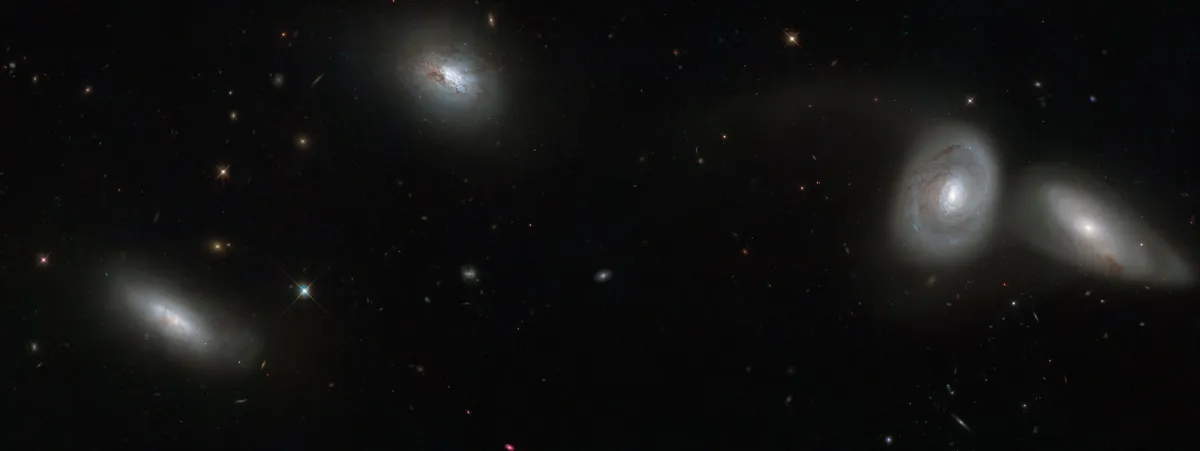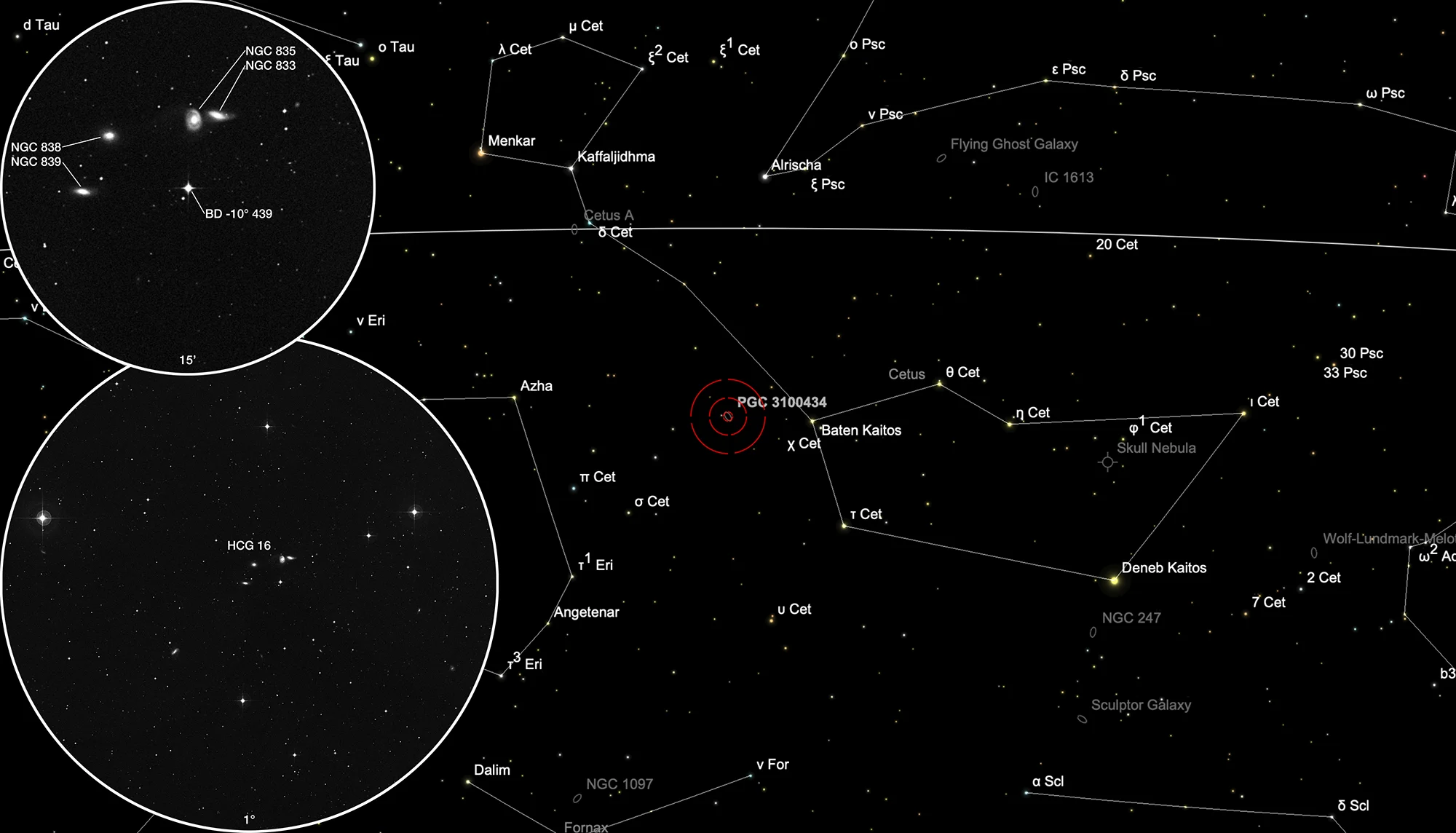Group of Galaxies Hickson 16 (Arp 318)

History
These four galaxies were discovered by William Herschel on 28 November 1785 with his 18.7" reflector telescope. He cataloged them as class II (faint nebulae) with numbers 482, 483, 484, 485 and noted: «Four. The preceding two both faint, extended, small within 1' distance in the direction of the parallel of declination. The following two both pretty faint, pretty small extended about 2' distance and nearly in the direction of the meridian.» [464]
In 1966 the American astronomer Halton Christian Arp published his «Atlas of Peculiar Galaxies», which was the result of more than four years of direct photography with the 200-inch Hale telescope of Mount Wilson and Palomar Observatories. He collected 338 unusual looking galaxies or group of galaxies and ordered them empirically according to their form and visual appearance. This group of galaxies with the number 318 was arranged in group #311-321 as groups of galaxies. He noted: «Faint, diffuse streamers, peculiar galaxies.» [199]
The British-Canadian astronomer Paul Hickson presented in 1982 his systematic search for groups of galaxies on the photo plates of the Palomar Observatory Sky Survey (POSS) to the public. In order to be classified by him as a galaxy group, at least four members should be identifiable, which had to be reasonably compact and isolated from the rest. The catalog contains 100 groups of galaxies. [140] The group number 16 has 4 members. In the 1993 special issue of his «Atlas of Compact Groups of Galaxies» he misidentified it with Arp 327 and noted: «Consists of four clearly distorted late type galaxies of comparable luminosity. All but galaxy b (NGC 833) have strong radio and infrared emission.» [166]
Physical Properties
NGC 839 is a LINER (Low-Ionisation Nuclear Emission-line Regions) contain heated gas at their cores, which spew out radiation. Its companion NGC 838 is a LINER-type galaxy with lots of starburst activity and no central black hole. NGC 835 and NGC 833, are both Seyfert 2 galaxies which have luminous cores when observed at other wavelengths than in the visible light, and are home to active supermassive black holes.
The X-ray emission emanating from the black hole within NGC 833 is so high that it suggests the galaxy has been stripped of gas and dust by past interactions with other galaxies. It is not alone in having a violent history – the morphology of NGC 839 is likely due to a galactic merger in the recent past, and long tails of glowing gas can be seen stretching away from the galaxies on the right of the image. [566]
The distance to this compact group of galaxies is estimated to 52.50 Mpc. [145]
| Name | RA | Dec | Type | bMag | vMag | B-V | SB | Dim | PA | z | D(z) | Dreyer Description | Identification, Remarks |
|---|---|---|---|---|---|---|---|---|---|---|---|---|---|
| NGC 833 | 02 09 20.8 | -10 07 58 | Gx (Sa/P) | 13.7 | 12.7 | 1.0 | 11.6 | 1.5 × 0.7 | 85 | 0.012889 | 54.44 | F, S, R, 1st of 4 | WH II 482; h 199=2463; GC 495; MCG -2-6-30; Arp 318; HCG 16B |
| NGC 835 | 02 09 24.6 | -10 08 07 | Gx (SBab/P) | 12.9 | 12.1 | 0.8 | 12.2 | 1.3 × 1.1 | 15 | 0.013586 | 57.39 | F, S, R, 2nd of 4 | WH II 483; h 200=2464; GC 497; MCG -2-6-31; MK 1021; Arp 318; IRAS 02069-1022; HCG 16A; KUG 0206-103 |
| NGC 838 | 02 09 38.4 | -10 08 45 | Gx (S0) | 13.6 | 13.0 | 0.6 | 12.8 | 1.2 × 0.9 | 85 | 0.012844 | 54.25 | vF, vS, R, 3rd of 4 | WH II 484; h 201=2465; GC 498; MCG -2-6-33; MK 1022; Arp 318; IRAS 02071-1023; HCG 16C; KUG 0207-103 |
| NGC 839 | 02 09 42.9 | -10 11 00 | Gx (S0/P) | 13.9 | 13.1 | 0.8 | 13.0 | 1.4 × 0.7 | 84 | 0.012922 | 54.58 | vF, pS, R, 4th of 4 | WH II 485; h 202=2466; GC 499; MCG -2-6-34; Arp 318; HCG 16D; IRAS 02072-1025 |
Finder Chart
The Hickson 16 compact group of galaxies can be found in the constellation Cetus. On 28 October it is in opposition to the Sun and crosses the meridian at local midnight. The best time for observation is in the months from June to March.
